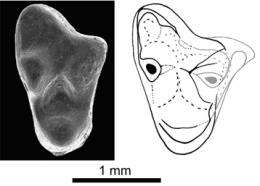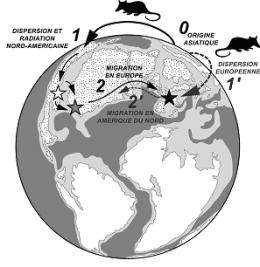Discovery of the oldest European marsupial

(PhysOrg.com) -- Remains of one of the oldest known marsupials have been recovered in Charente-Maritime by a palaeontologist team from the Muséum national d'Histoire naturelle (CNRS, France) and the University of Rennes. This discovery raises a new hypothesis about the dispersal route of the earliest marsupial mammals. Results are published this week in the journal PNAS.
In the history of the first modern mammals (i.e., marsupials and placentals), during the Cretaceous, Europe is almost a Terra incognita. No fossils are known between 125 and 84 million years, and very few up to the Cretaceous-Tertiary boundary (65 million years). In the Cenomanian (99 million years) of Charente-Maritime, the discovery of the scientist team from the Muséum (CNRS) and the University of Rennes thus provides important information on the early history of these mammals in Europe.
The discovery consists of a few teeth, collected after screenwashing of 5 tons of sediment. They belong to a new tiny mammal, named Arcantiodelphys marchandi, which is one of the oldest and most primitive marsupial known in the world. It is also the oldest known representative of the modern therians in Europe.
This discovery is the result of a research program of the University of Rennes 1 on the vertebrates from the Cretaceous of Charentes, in collaboration with the MNHN.

Arcantiodelphys marchandi improves our knowledge of the earliest stages of the marsupial history, so far known mostly from North American fossils. Its main significance is that the beginning of the marsupial history also involved Europe. Furthermore, it confirms faunal links between North America and Europe during the mid-Cretaceous.
It is from these primitive marsupials from the “Euramerican“ Cretaceous that the modern marsupials colonized the southern landmasses, South America and mainly Australia where they are nowadays well diversified. Opossums and kangaroos are extant representatives of this very old northern origin of the marsupials.
More information: Romain Vullo, Emmanuel Gheerbrant, Christian de Muizon, and Didier Néraudeau. The oldest modern
therian mammal from Europe and its bearing on stem marsupial paleobiogeography. PNAS, November, 2nd 2009.
Provided by CNRS

















